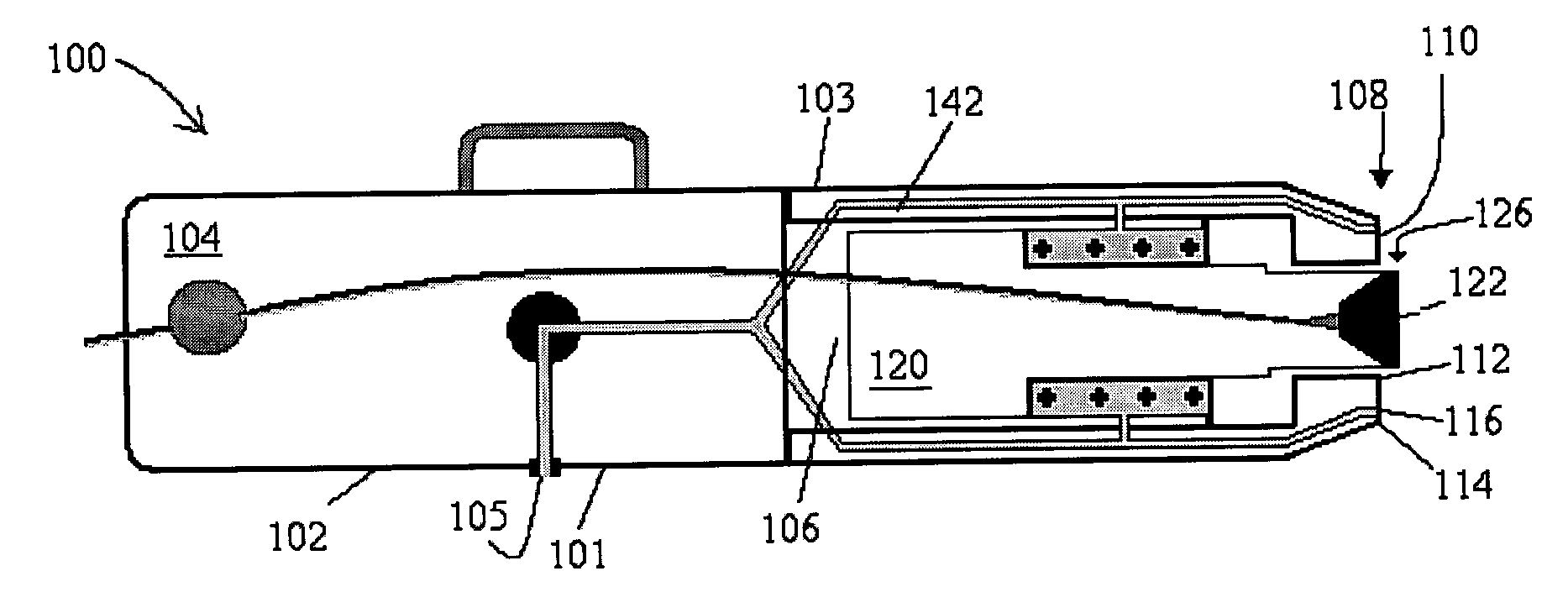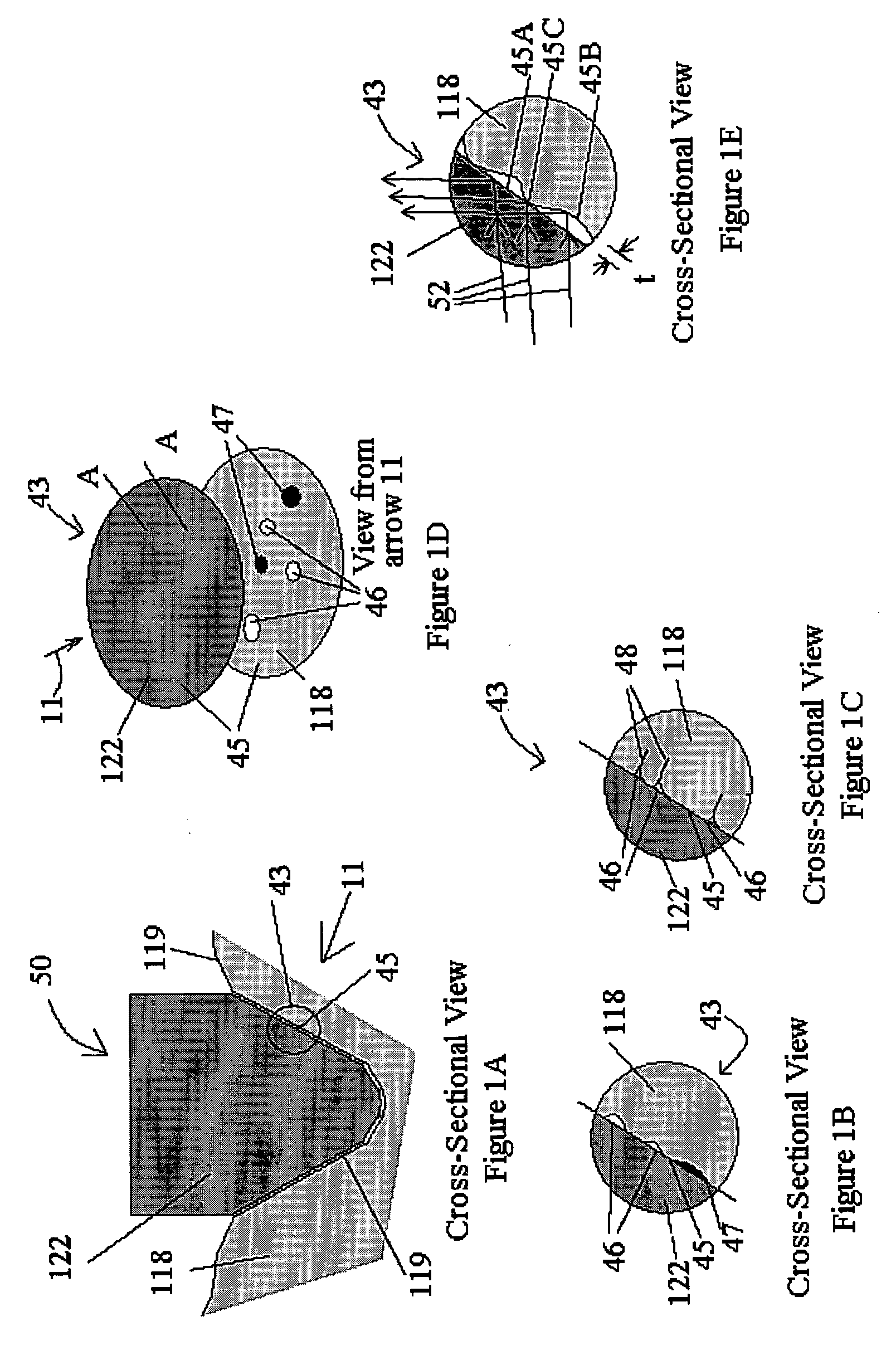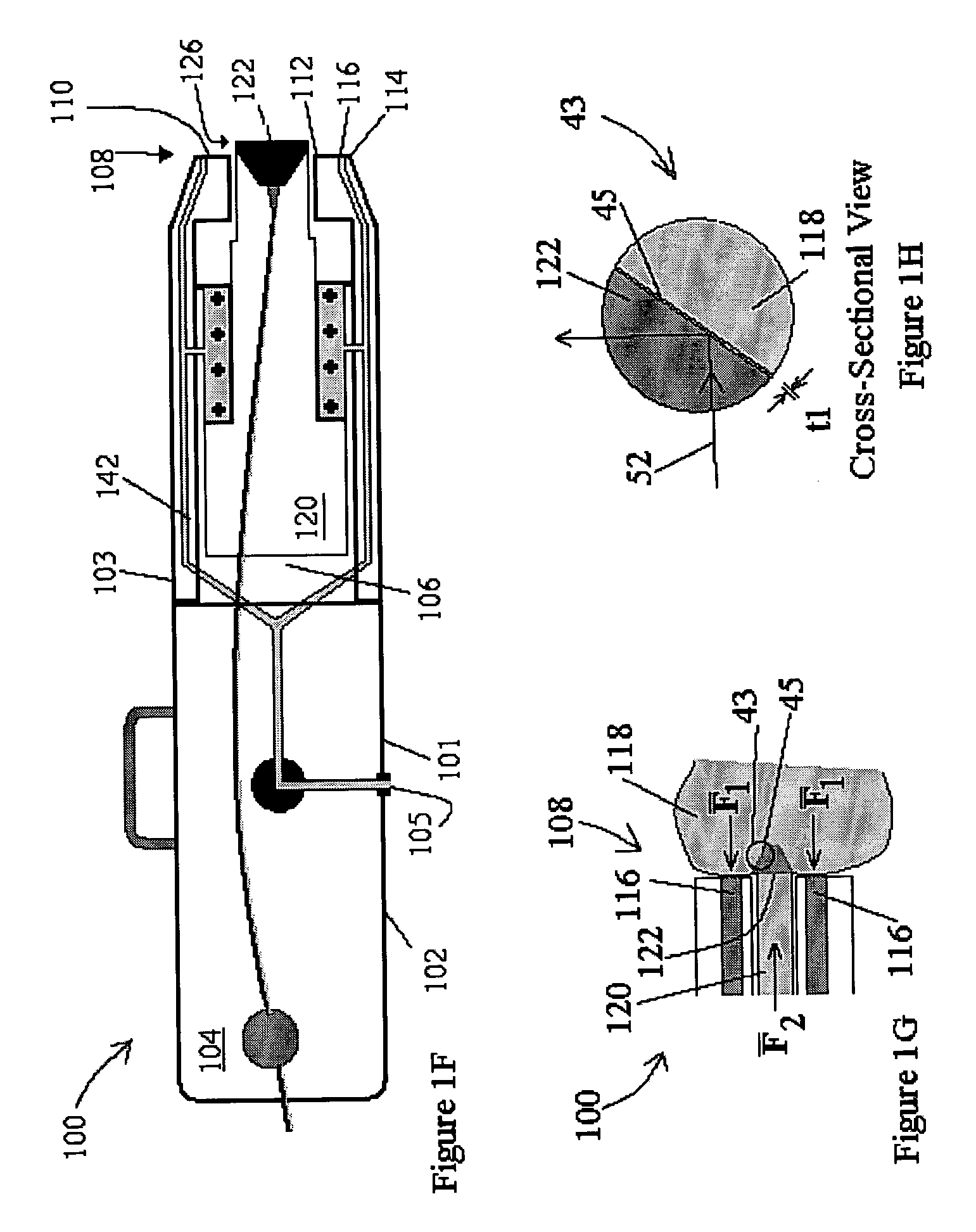Device for forming an effective sensor-to-tissue contact
a sensor and tissue technology, applied in the field of tissue characterization, can solve the problems of air bubbles between an ultrasound tool and the tissue, interference with ultrasound measurements, and liquid layer may interfere with optical spectroscopy,
- Summary
- Abstract
- Description
- Claims
- Application Information
AI Technical Summary
Benefits of technology
Problems solved by technology
Method used
Image
Examples
first embodiment
[0117]FIGS. 8A and 8B schematically illustrate piston 120 in retracted and deployed positions, respectively, according to a Piston 120 has a fixed travel d, shown as 180, wherein the construction of proximal portion 106 operates as a stop, to ensure the fixed travel. Alternatively, the fixed travel is reached when spring 160 is compressed to its maximum value. Preferably, distance d is between about 1 mm and about 50 mm.
second embodiment
[0118]FIGS. 8C and 8D schematically illustrate piston 120 in retracted and deployed positions, respectively, according to a The advancement of piston 120 and of sensor 122 is such that a force F3, exerted on piston 120, in the −z direction is exactly balanced by the force, which the attached tissue 118 imposes on sensor 122, in the +z direction, and by the force contracted spring 160 imposes on piston 120 in the +z direction.
[0119] Reference is now made to FIGS. 9A-9D, which schematically illustrate various geometries for the proximal ends 126 of the sensor 122, in accordance with the present invention.
[0120]FIG. 9A provides the reference coordinate system 172.
[0121]FIG. 9B schematically illustrates a roller-shaped sensor 122, and its polished surface 164, at proximal end 126.
[0122]FIG. 9C schematically illustrates a dome-shaped sensor 122, and its polished surface 164, at proximal end 126.
[0123]FIG. 9D schematically illustrates a cube-shaped sensor 122, and its polished surfac...
PUM
 Login to View More
Login to View More Abstract
Description
Claims
Application Information
 Login to View More
Login to View More - R&D
- Intellectual Property
- Life Sciences
- Materials
- Tech Scout
- Unparalleled Data Quality
- Higher Quality Content
- 60% Fewer Hallucinations
Browse by: Latest US Patents, China's latest patents, Technical Efficacy Thesaurus, Application Domain, Technology Topic, Popular Technical Reports.
© 2025 PatSnap. All rights reserved.Legal|Privacy policy|Modern Slavery Act Transparency Statement|Sitemap|About US| Contact US: help@patsnap.com



